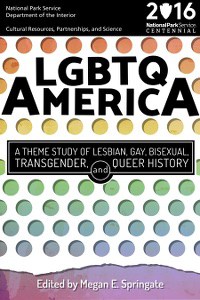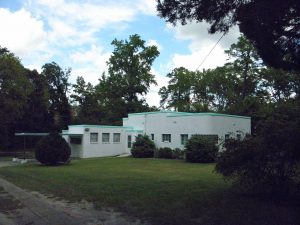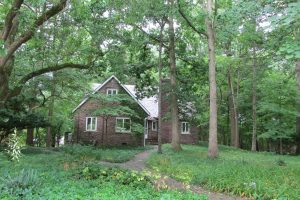Services
Historic Preservation
Established in the 1960s, the historic preservation programs of the United States spent decades primarily recognizing one particular vision of what counts as “historic,” and that vision was heavily weighted toward the experiences of the wealthy and powerful. Preservationists are now working to correct the balance of stories told, and I am available to assist. I provide historic preservation documentation for properties representing traditionally excluded parts of the U.S. past, such as those related to LGBTQ+, women’s, or African American history.
Historic Context Statements
Within the effort to diversify the experiences represented in U.S. historic preservation programs, one challenge is a lack of familiarity with traditionally overlooked historical trends. To address this challenge, historic context statements provide an overview of a historical subfield and identify properties that might be considered for historic designation.
Here are examples of historic context statements I have been involved with
LGBTQ America: A National Historic Landmarks Theme Study
LGBTQ America was the first study of LGBTQ+ history commissioned by a national government. This report was intended to introduce the various facets of the LGBTQ+ past to historic preservationists around the country, so that they could work to preserve the tangible evidence of these experiences. I was honored to contribute to this text.
Historic Context Study of LGBTQ Maryland
In 2019-2020, I partnered with Preservation Maryland and the Maryland Historical Trust to create a statewide historic context study of Maryland LGBTQ history. A historic context study is a document used in historic preservation, to assist preservation professionals and commissions in evaluating the historic significance of a particular site. This study is now completed, and has served as a foundation for continuing efforts to preserve LGBTQ+ sites in Maryland.
National Historic Landmarks
National Historic Landmarks (NHLs) are well-preserved properties with national historical significance. The requirements for NHL designation are stricter than for the National Register (below), and the process of nominating a property for this designation requires a higher level of technical expertise.
Here are examples of National Historic Landmark nominations I have worked on
House of the Furies, Washington, DC
The Furies were a lesbian feminist collective in Washington, DC, in the early 1970s. Their short-lived periodical, The Furies, articulated much of the groundwork for lesbian separatism. The Secretary of the Interior designated the main house associated with the Furies a National Historic Landmark in 2024, based on a nomination I authored.
Azurest South, Petersburg, VA
Azurest South, in Petersburg, Virginia, was the home of Amaza Lee Meredith (who also designed the house) and Edna Meade Colson. Meredith and Colson were both professors at Virginia State University, a historically black college. The house is a rare example of International Style domestic architecture in the south, and Meredith is significant for having the vision to design such a dwelling in the 1930s Jim Crow South, despite race, gender, and class barriers that prevented her from receiving formal architectural training. I wrote an NHL nomination for this property, and the Secretary of the Interior designated it a National Historic Landmark in December 2024.
National Register of Historic Places
When a property is placed on the National Register of Historic Places, its historic significance is recognized, which in turn can help protect the site and allow the property owner to access funding to perform necessary repairs. The process of placing a property on the National Register involves coordination with state and federal authorities, as well as proper documentation of the site’s history, all of which I can assist with.
Here are examples of National Register nominations I have done
Leon's, Baltimore, Maryland
Leon’s is a bar that has been operating in the same location since the 1930s and has served a primarily LGBTQ+ clientele since the mid-1950s. The organization Preservation Maryland engaged me to document the property and its historical significance for inclusion in the National Register. The nomination is currently being reviewed by the Maryland Historical Trust, which served as the state historic preservation office in Maryland.
Home of Alfred Kinsey, Bloomington, Indiana
Alfred Kinsey was an early sex researcher who in the mid-twentieth century published a groundbreaking study of sexual practices in the United States, which was known colloquially as “The Kinsey Report.” At the request of the National Park Service, I completed a National Register of Historic Places nomination for Kinsey’s home.




